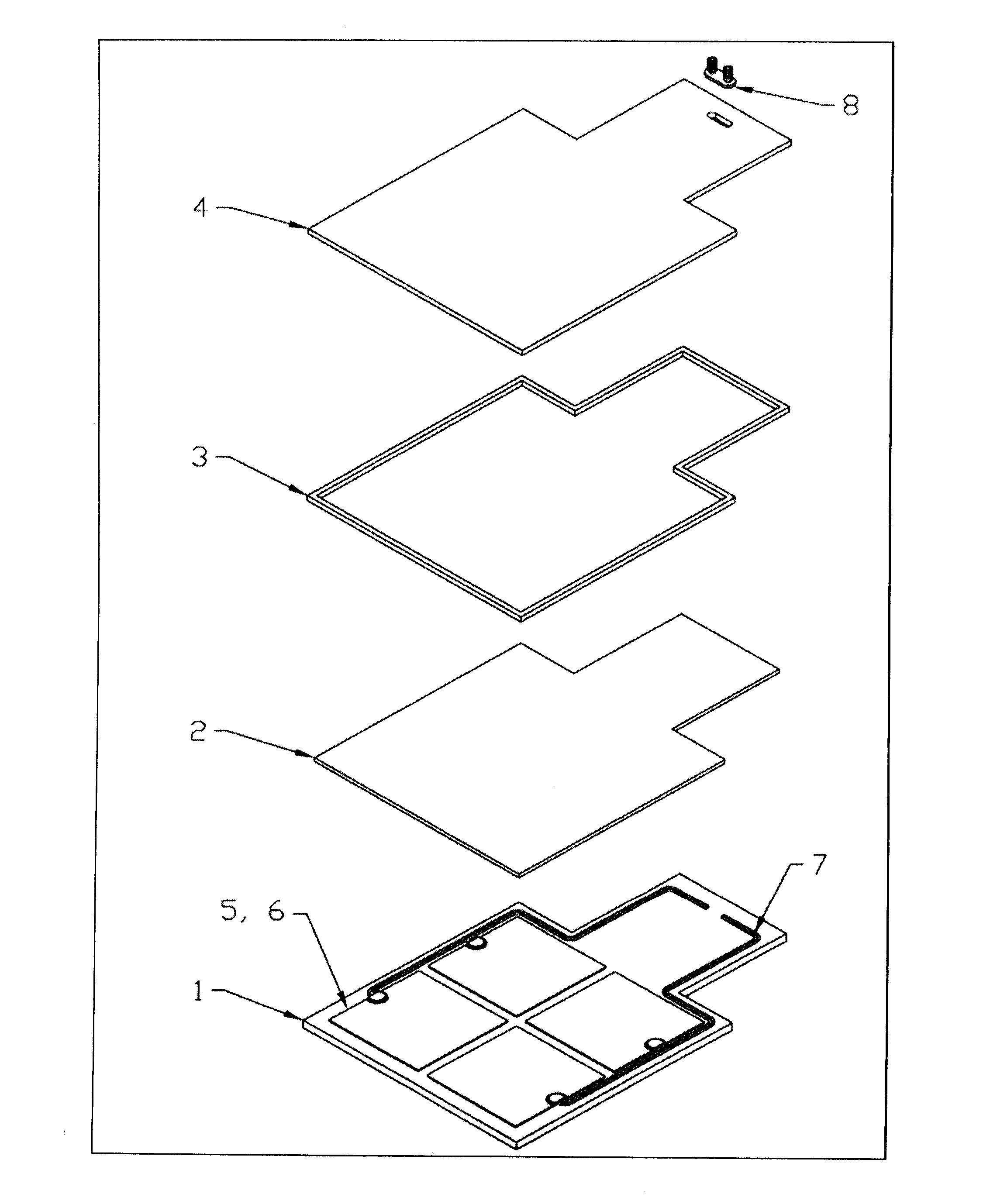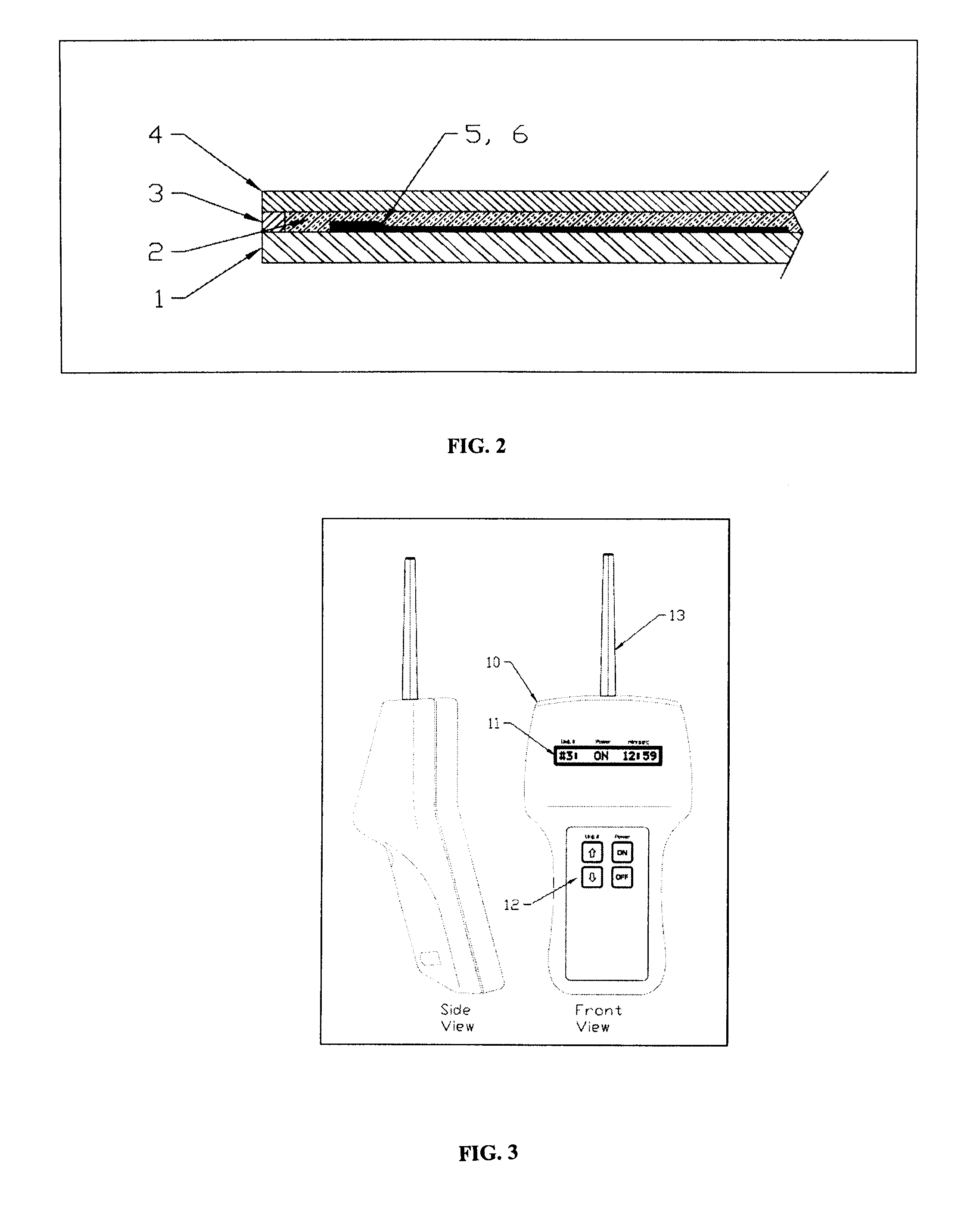Reactive firearm training target
a firearm training and target technology, applied in the direction of reflecting targets, electric heating, electrical equipment, etc., can solve the problems of difficult visual observation of the shooter's accuracy, difficult visual verification of a hit, and inability to recover the target after a selected number of shots to judge the accuracy of the shooter
- Summary
- Abstract
- Description
- Claims
- Application Information
AI Technical Summary
Benefits of technology
Problems solved by technology
Method used
Image
Examples
example i
Target Body
[0076]A target body made of ⅜″ (0.0095 m) thick armor plate HARDOX 500 steel was used. The target front plate consisted of a 12″ (0.3048 m) square body with a 6″ (0.1524 m) square head, cut from a single piece.
[0077]The power required to heat a mass of material is expressed by:
P=M*Cp*ΔTt
[0078]wherein P=Power (W); M=Mass (kg); Cp=Specific heat capacity (J / kg° C.); T=Required temperature change (° C.); t=required heating time in seconds (s); (note: 1 W=1J / s)
[0079]The density of HARDOX500 is 7850 kg / m3.
[0080]The mass of the target front is calculated as volume×density.
M=(Vb+Vh)*ρ
wherein Vb=Volume of Body; Vh=Volume of Head; ρ=Density (kg / m3).
[0081]Vb=0.3048 m*0.3048 m*0.0095 m=0.000883 m3
[0082]Vh=0.1524 m*0.1524 m*0.0095 m=0.000221m3 [0083]M=(0.000883 m3+0.000221 m3)*7850 kg / m3=8.67 kg
[0084]The specific heat capacity (Cp) of Hardox500 is 470 J / kg° C. Thus, the power required for a temperature rise of 10° C. in 5 minutes (300 s) is:
P=8.67kg*470J / kg*10°C.300s=136W
[0085]In or...
example ii
Remote Control Fabrication
[0088]The remote control is fabricated from the elements referenced in FIG. 3. A commercially available hand-held, environmentally sealed enclosure 10 houses an alpha-numeric display 11, LCM-S01601DSF, a preferably illuminated keypad 12 which is a Part of the PCB, Radiotronix # ANT-915-06A (½ wave dipole RPSMA connector), and an antenna 13, Radiotronix # ANT-915-06A (½ wave dipole RPSMA connector). The remote control is operated by way of a microprocessor based custom control board (PCB), PCB Assembly drawing (Preliminary) attached, and a wireless communications module Radiotronix #Wi.232FHSS-250-FCC-ST-R. Power to the remote control is provided by a rechargeable Li-Ion battery pack (Rose+Bopla, Beluga Ex Series) or, alternatively, the remote control may also include a disposable battery power source, commercially available from Rose+Bopla (BOS Streamline Series). The batteries can be replaceable or rechargeable. The rechargeable batteries are commercially ...
PUM
 Login to View More
Login to View More Abstract
Description
Claims
Application Information
 Login to View More
Login to View More - R&D
- Intellectual Property
- Life Sciences
- Materials
- Tech Scout
- Unparalleled Data Quality
- Higher Quality Content
- 60% Fewer Hallucinations
Browse by: Latest US Patents, China's latest patents, Technical Efficacy Thesaurus, Application Domain, Technology Topic, Popular Technical Reports.
© 2025 PatSnap. All rights reserved.Legal|Privacy policy|Modern Slavery Act Transparency Statement|Sitemap|About US| Contact US: help@patsnap.com



